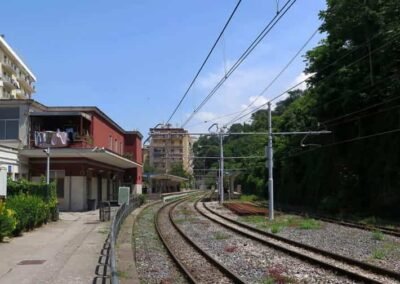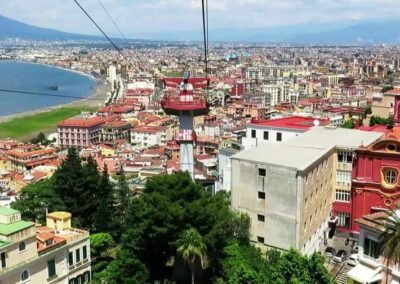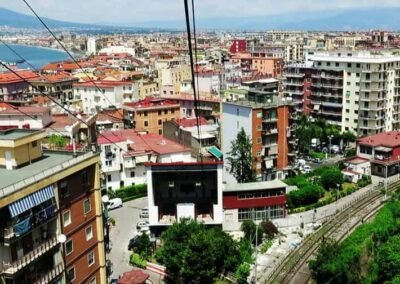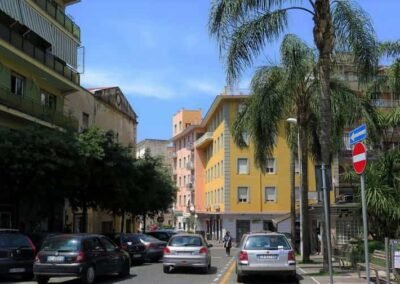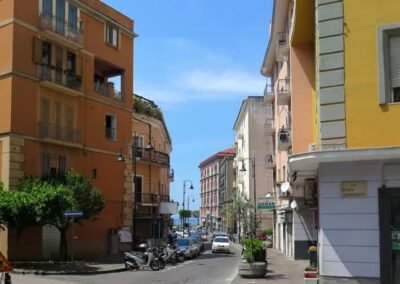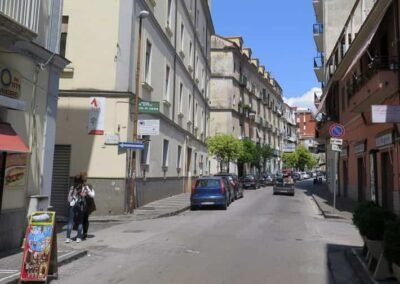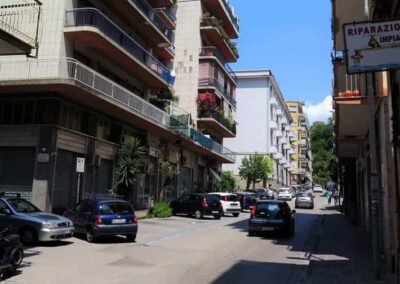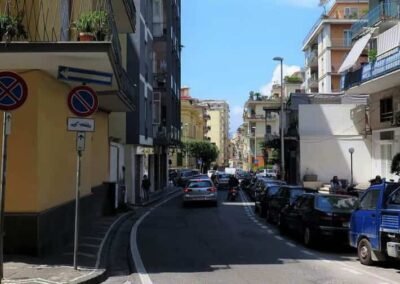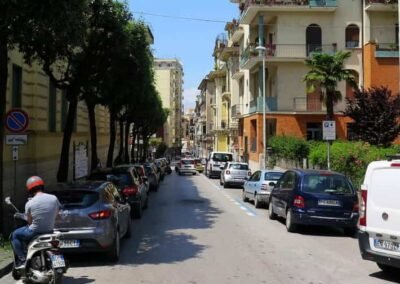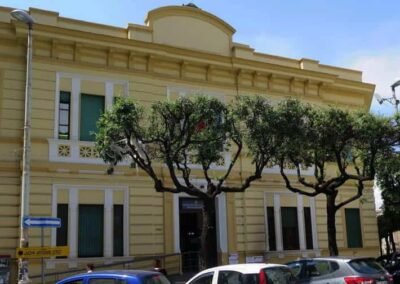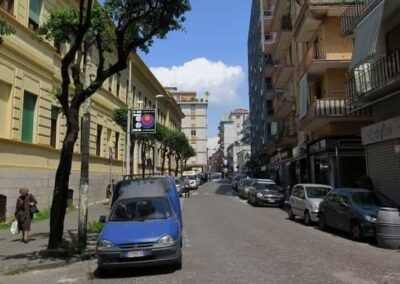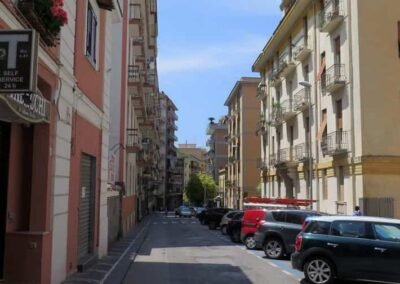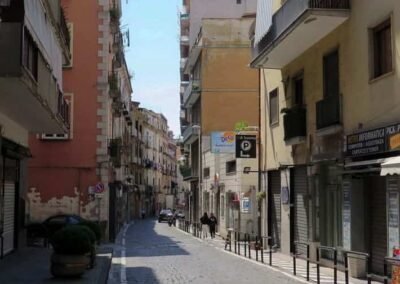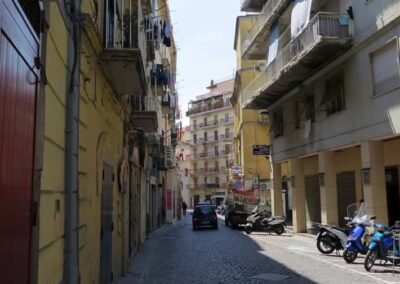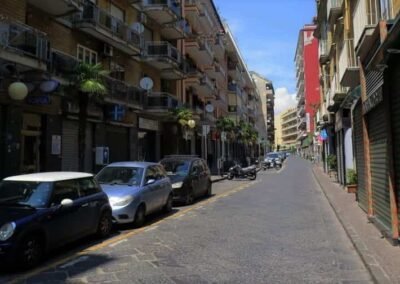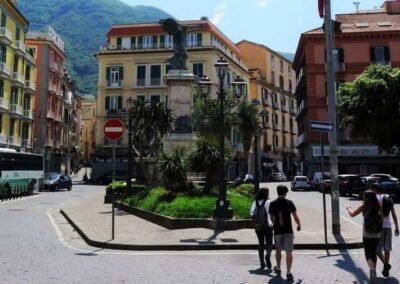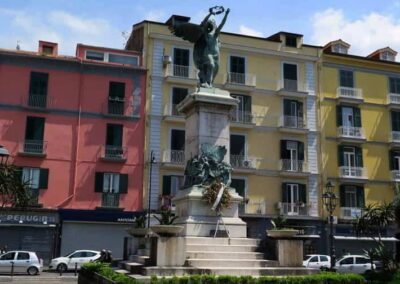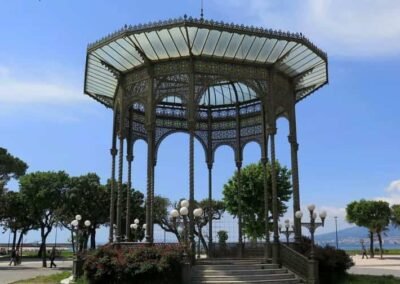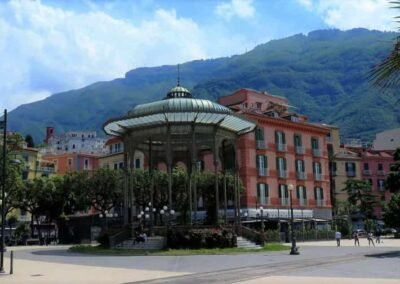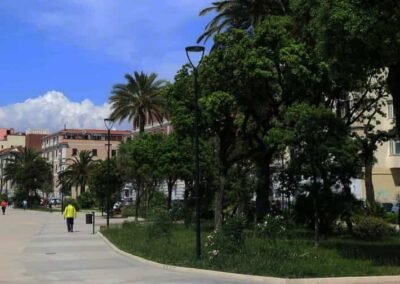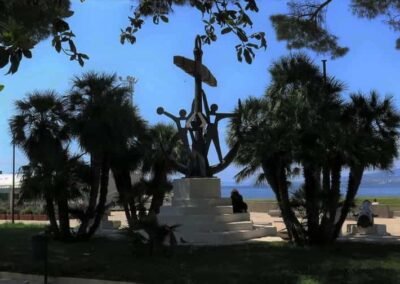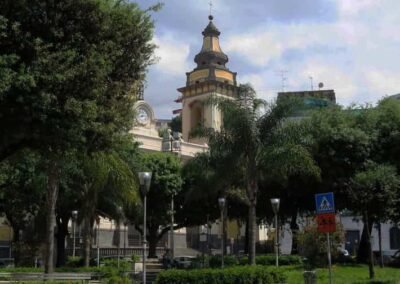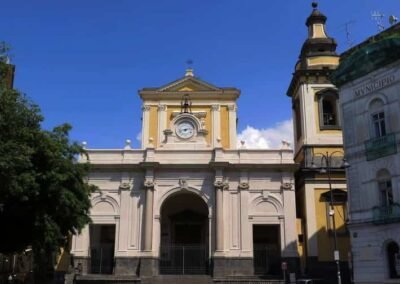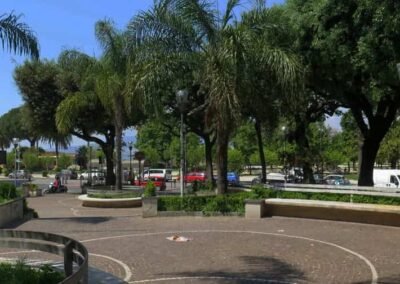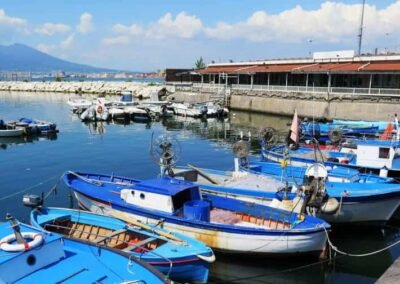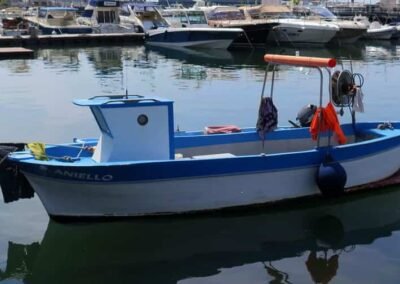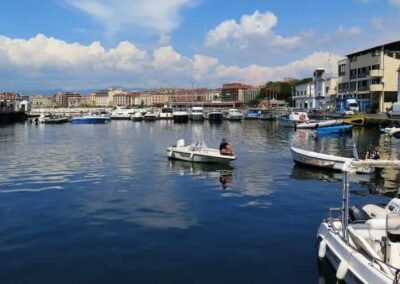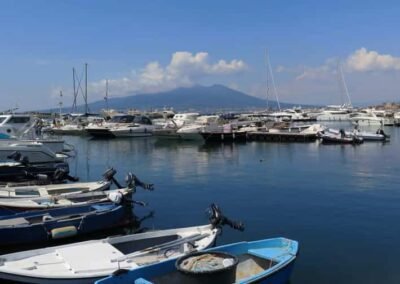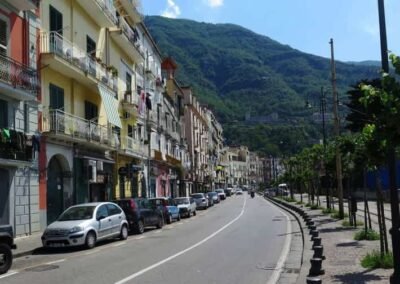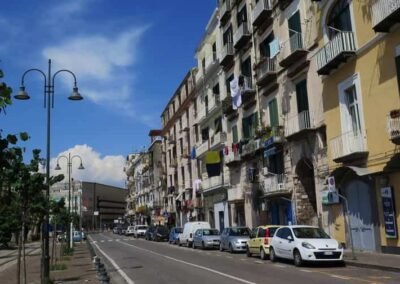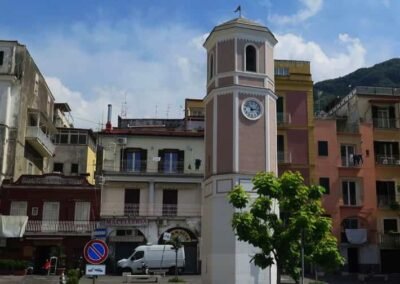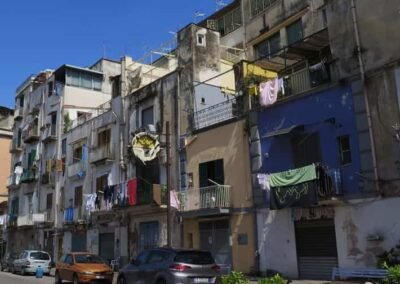HOME
THE REGIONS OF ITALY
PLACES IN ITALY
Italy in Photos
Parco, Corso Giuseppe Garibaldi, 80053 Castellammare di Stabia, Italy (May 2018)
Castellammare di Stabia
Castellammare di Stabia is a picturesque coastal town located in the Campania region of southern Italy, nestled between the Sorrento Peninsula and the Bay of Naples. It lies at the foot of Mount Faito, a majestic peak that is part of the Lattari Mountains, offering breath-taking views of the sea and surrounding landscapes. This charming town, often called the “Gateway to the Amalfi Coast,” beautifully combines ancient history, natural beauty, and vibrant local life, making it a captivating destination for travellers seeking both relaxation and cultural depth.
The history of Castellammare di Stabia stretches back to ancient times. It was originally known as Stabiae, a Roman settlement that was destroyed by the eruption of Mount Vesuvius in 79 AD, the same catastrophe that buried Pompeii and Herculaneum. Archaeological excavations have uncovered remarkably well-preserved Roman villas adorned with frescoes, mosaics, and elaborate architecture, providing a fascinating glimpse into the daily life of the Roman elite. Today, visitors can explore these sites and experience the rich historical heritage that defines the area.
In addition to its archaeological treasures, Castellammare di Stabia is famous for its natural hot springs, which have been renowned since antiquity for their healing properties. The thermal baths and spas in the town continue this ancient tradition, offering visitors a chance to unwind in a soothing environment surrounded by scenic beauty. The town’s seaside promenade, lined with palm trees and lively cafes, provides a perfect setting for leisurely walks along the water, where the view of Mount Vesuvius across the bay is simply spectacular.
The local cuisine is another highlight of Castellammare di Stabia. As part of the broader Neapolitan culinary tradition, the town offers dishes that emphasize fresh seafood, handmade pasta, and locally grown produce. Classic recipes such as spaghetti alle vongole and fried anchovies are served in welcoming trattorias, accompanied by local wines from the nearby Vesuvian hills.
Beyond its history and gastronomy, Castellammare di Stabia serves as an excellent base for exploring the surrounding region. From here, visitors can easily reach Sorrento, the Amalfi Coast, Pompeii, and Naples, all within a short journey. Whether one comes for the ancient ruins, the mountain views, or the warm hospitality of its people, Castellammare di Stabia offers a unique blend of culture, nature, and tradition that captures the true essence of southern Italy.
Worth a Visit
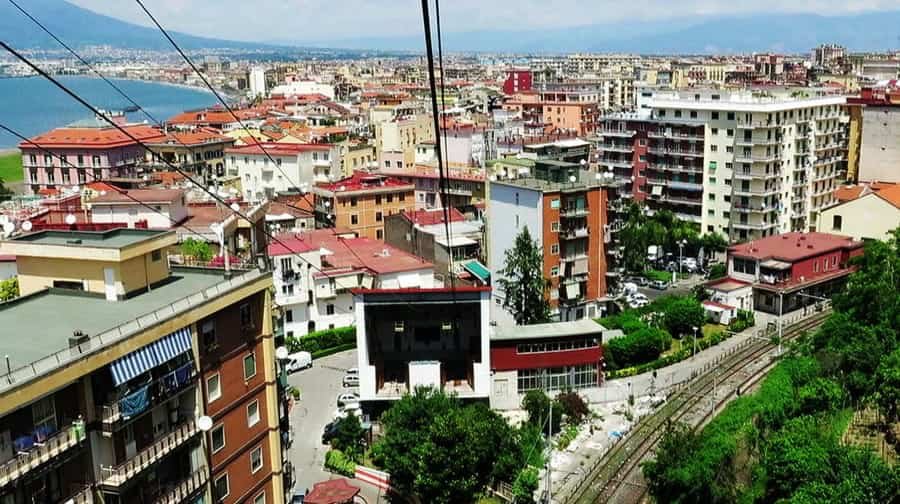
The Funivia Castellammare di Stabia is one of the most scenic and memorable ways to experience the beauty of the Sorrento Peninsula and the Bay of Naples. This aerial cable car, linking the coastal town of Castellammare di Stabia with the summit area of Monte Faito, offers passengers not only a convenient means of transport but also a breath-taking panoramic journey from sea to mountain in just a matter of minutes. Opened in the mid-20th century and now a beloved part of the region’s tourist and local infrastructure, the funivia starts its ascent near the Circumvesuviana railway station in Castellammare di Stabia. From there, it climbs over 1,000 metres to Monte Faito, part of the Monti Lattari range.
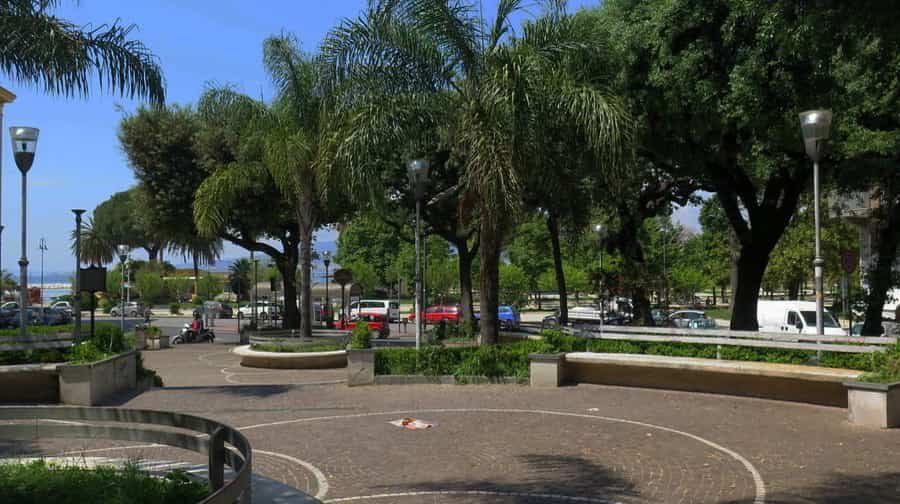
Piazza Papa Giovanni XXIII, located in the heart of Castellammare di Stabia, is a vibrant urban square that blends civic life, historical significance, and a welcoming atmosphere. Serving as a key meeting point for residents and visitors, it reflects both the town’s modern development and its deep-rooted traditions. Named in honour of Pope John XXIII—affectionately known as “Il Papa Buono” (the Good Pope), the square celebrates a figure remembered for his warmth, humanity, and efforts to open the Catholic Church to the modern world through the Second Vatican Council. The piazza occupies a strategic position within the town, close to major streets, shops, cafés, and administrative buildings. Its central location makes it a natural hub for daily life: a place where people meet for a coffee, run errands, or simply sit and watch the world go by.
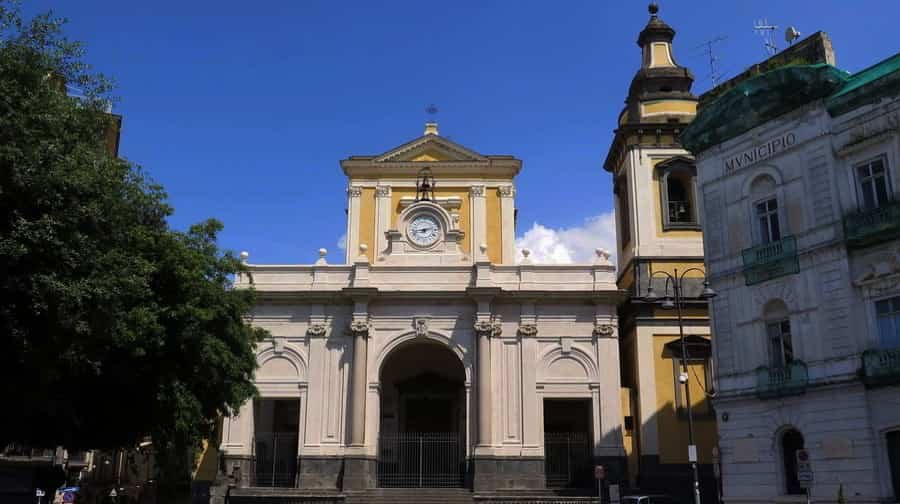
The Castellammare Cathedral, officially dedicated to Santa Maria Assunta and San Catello, stands as the most important place of worship in Castellammare di Stabia and a central symbol of the town’s faith, history, and identity. Rising in the heart of the historic centre, the cathedral is not only a religious landmark but also a repository of art, architecture, and tradition that has shaped local life for centuries. The cathedral’s origins date back to the Middle Ages, though the current building reflects a series of renovations and expansions carried out over the centuries. Its dedication to the Assumption of the Virgin Mary and to Saint Catello, Castellammare’s patron saint, underscores its dual spiritual significance
Photo Gallery of Walk – Funivia Castellammare to Via Giuseppe Bonito
Approximately 2.16 km – 1.34 miles
Funivia Castellammare – Piazza Unità d’Italia – Via Regina Margherita – Via Guglielmo Marconi – Via Nocera – Chiesa di Santa Maria dell’Orto, Strada Santa Maria dell’Orto – Cassarmonica, Corso Giuseppe Garibaldi – Via Giuseppe Mazzini – Via Giuseppe Bonito – Concattedrale Di Maria Santissima, Piazza Papa Giovanni XXIII – Via Giuseppe Bonito – Stabia Main Port – Via Giuseppe Bonito – Torre dell’Orologio, Piazza Cristoforo Colombo – Via Giuseppe Bonito
COPYRIGHT © 2018-2025 ITALY IN PHOTOS - ALL RIGHTS RESERVED
